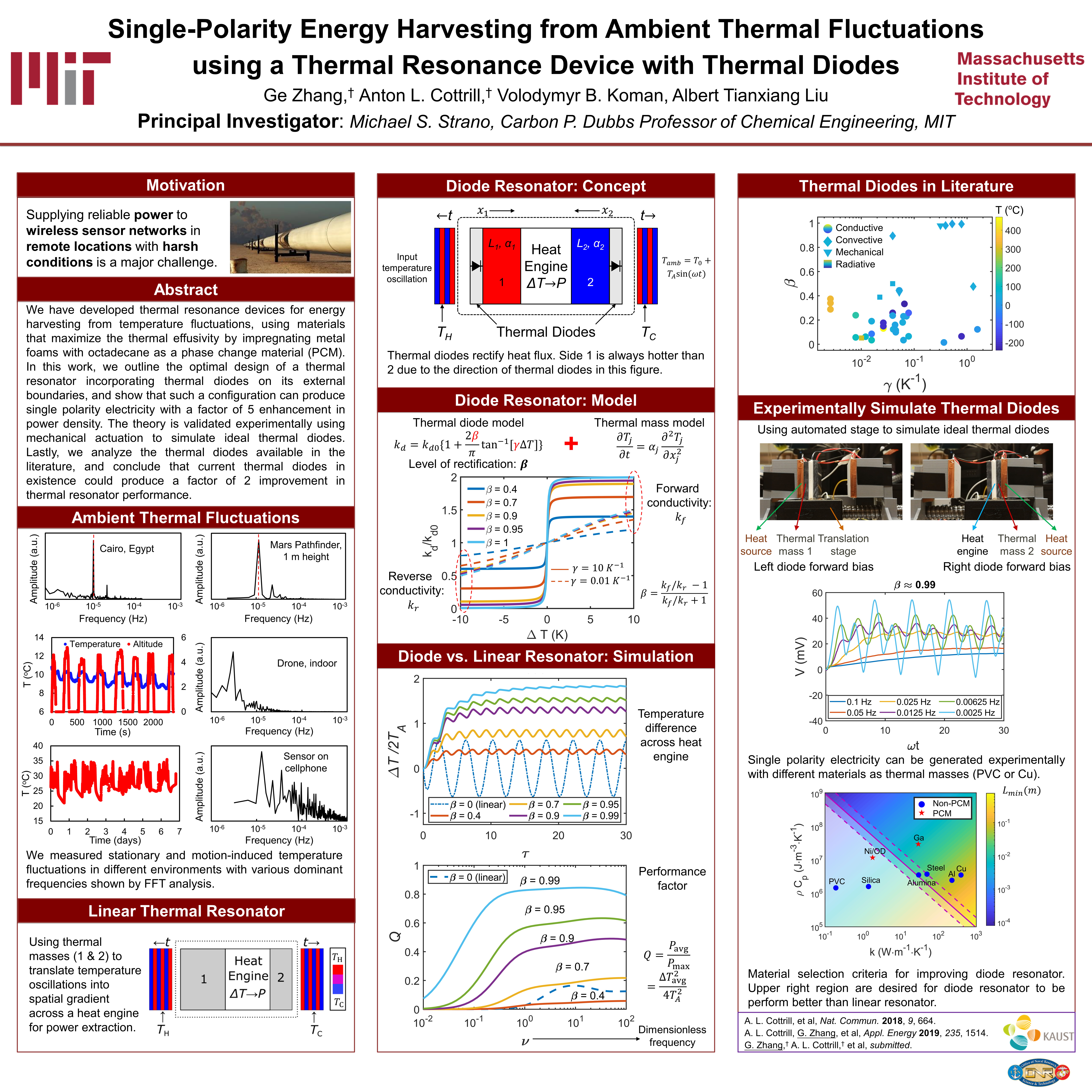(518l) Persistent, Single-Polarity Energy Harvesting from Ambient Thermal Fluctuations Using a Thermal Resonance Device with Thermal Diodes
AIChE Annual Meeting
2020
2020 Virtual AIChE Annual Meeting
Transport and Energy Processes
Poster Session: Transport and Energy Processes
Wednesday, November 18, 2020 - 8:00am to 9:00am
There is a pressing need for durable energy harvesting techniques that are not limited by intermittency, and capable of persistent and continuous operation over extended periods of time in a variety of environments. Our laboratory has identified ambient thermal fluctuations of various frequencies as potentially abundant, ubiquitous sources of such energy. We have developed a type of novel devices called thermal resonator for transient thermal energy harvesting, tested them in various environments and are working on integrating them with energy storage systems.1, 2 In this work, we present a mathematical theory for the operation and design of a thermal resonator interfaced with optimized thermal diodes that we show is capable of much higher productivity than previous possible. This work is a significant advance over resonators that we have previously introduced using high thermal effusivity materials for a dual polarity electrical output from input temperature fluctuations. Herein, we outline the optimal design of a thermal resonance device incorporating optimal thermal diodes on its external boundaries with the environment, and we show that such a configuration is able to produce single polarity electrical generation drastically exceeding the performance of previous thermal resonators by a factor of 5. We also characterize additional thermal fluctuations in the environment, expanding the scope of resonator application. Lastly, we analyze the capability of thermal diodes available in the literature to realize such an enhancement in thermal resonance performance, and we conclude that current thermal diodes in existence could produce approximately a factor of 2 improvement in thermal resonator performance. This work points out the significant role of thermal diodes in ambient energy harvesting, and outlines important directions for next generation thermal diodes, independent of advances in thermoelectric or pyroelectric materials.
Reference:
- L. Cottrill, A. T. Liu, Y. Kunai, V. B. Koman, A. Kaplan, S. G. Mahajan, P. W. Liu, A. R. Toland, M. S. Strano, Nat. Commun. 2018, 9, 664.
- L. Cottrill, G. Zhang, A. T. Liu, A. Bakytbekov, K. S. Silmore, V. B. Koman, A. Shamim, M. S. Strano, Appl. Energy 2019, 235, 1514.

